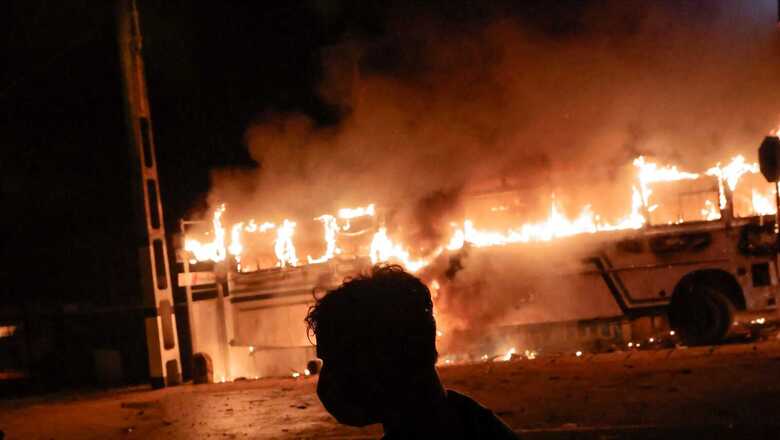
views
A massive sand field spreading over 750 acres reclaimed from the Indian Ocean greets the visitors once they enter Fort area of Colombo, the current seat of power built by the Dutch and British former colonial powers of then Ceylon and now Sri Lanka. The new “colonial” power, China, has reclaimed this land from the ocean to build an international port city, a world-class free trade zone, which it hopes will rival Singapore and Dubai once fully operational.
Many blame China for the current unprecedented economic crisis in the modern history of Sri Lanka. International media is full of stories blaming China for the looming financial disaster.
But China is just one of the many big reasons which have caused this economic crisis.
WAR AND REBELS
Ceylon became independent from the United Kingdom on February 4, 1948. The newly independent, small nation remained a Dominion within the British Commonwealth till it became a republic in 1972.
When the British left Ceylon, most of the trade and commerce were controlled by the British and other European business houses. More than 40,000 Europeans, including a few hundred Americans, continued to live on the island doing business. White bureaucrats, police and military officers, too, continued to work. Ceylon rupee was strong and accepted everywhere.
The infamous Sinhala-only policy and subsequent shift to extreme socialism of Prime Minister Sirimavo Bandaranaike forced out all private enterprises.
The JVP insurgency of 1970s also added to the country’s woes. JR Jayawardene-led UNP government reversed Bandaranaike’s socialism and embraced an open market economy in 1977. In fact, Sri Lanka became the first nation in South Asia to embrace economic liberalisation.
But the Tamil Eelam civil war that lasted 25 years deterred foreign investors and the government, which was busy fighting rebels, also did not focus much on building a strong, self-sustaining economy.
I am writing this post with a very heavy heart as I am hurt and sad to see the state of my country which is on the brink of an economic depression, caused by our incompetent power-hungry rulers. pic.twitter.com/l5yHQ4k3rz— Roshan Mahanama (@Rosh_Maha) April 1, 2022
INDIA: THE SAVIOUR?
Sri Lanka exports tea, cinnamon, spices, rubber, coconut, sea products, gems and garments. It imports most of the items, including a bulk of its food items. Sri Lankans working abroad send 3-4 billion dollars home annually. Tourism employs over 3 million generating 4-5 billion dollars a year.
The successive governments, however, made no serious efforts to build manufacturing and service sector in the country.
After 2009, for a brief period, Sri Lanka witnessed a big economic growth, attracting huge foreign and domestic investments and raising hopes of millions. However, the reckless issuance of sovereign bonds worth billions of dollars, borrowing and wasteful spending wrecked the economy in the past 10 years. Huge borrowing from China has also worsened the situation. During 2009-12, Sri Lanka took IMF assistance, but failed to discipline the fiscal situation.
The Easter Bombings of 2019, followed by two years of Covid-induced harshest lockdown ravaged the economy of island nation.
The ruling Rajapaksa family is now under fire for pushing Sri Lanka on the verge of bankruptcy and starvation.
Local economists feel that the current government is incapable of saving the island from a certain doom and the payment issues can be resolved only if the international community steps forward.
Former Sri Lankan cricket sensation Sanath Jayasuriya, too, warned the situation was grim and has reached a breaking point.
#WakeUPSriLanka pic.twitter.com/hZO8tD2lbY— Sanath Jayasuriya (@Sanath07) April 1, 2022
Many Sri Lankans hope that India will save them. Borrowing to meet next day’s requirements won’t help the country, but will push it into a deeper debt trap.
As the demand for the ouster of President Gotabaya Rajapaksa grows louder, Sri Lanka stares at an uncertain future.
Read the Latest News and Breaking News here



















Comments
0 comment